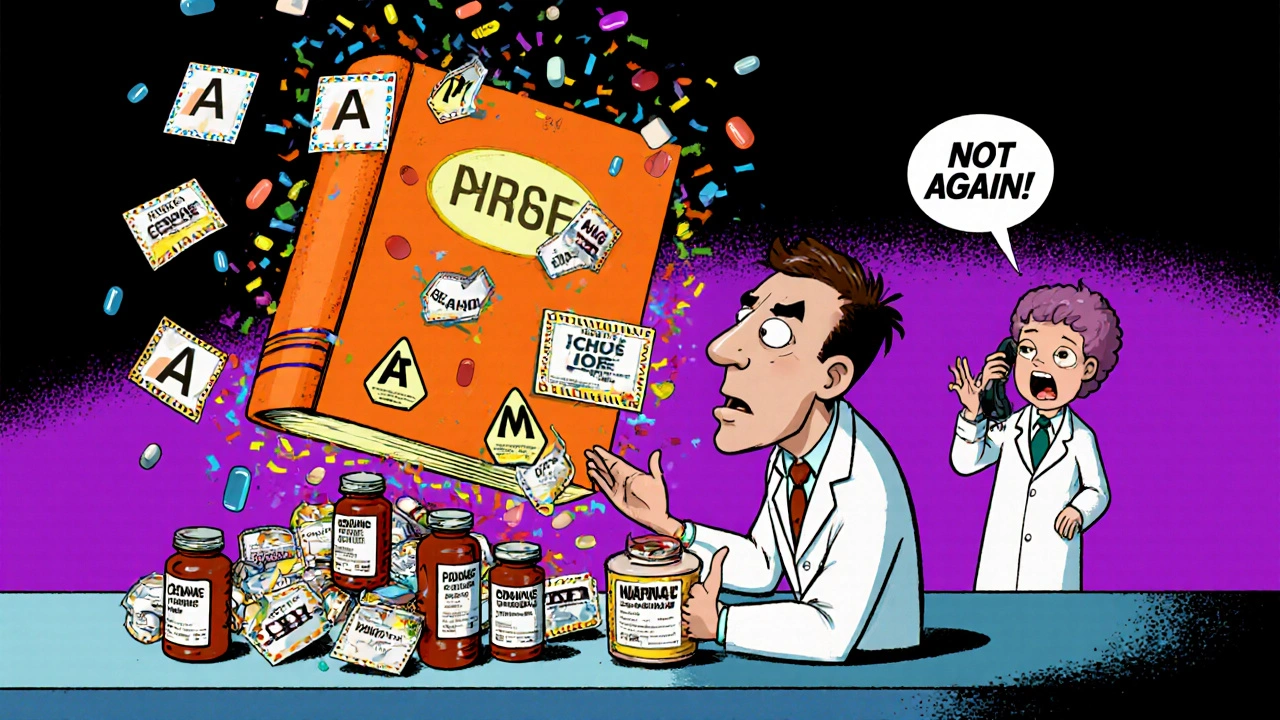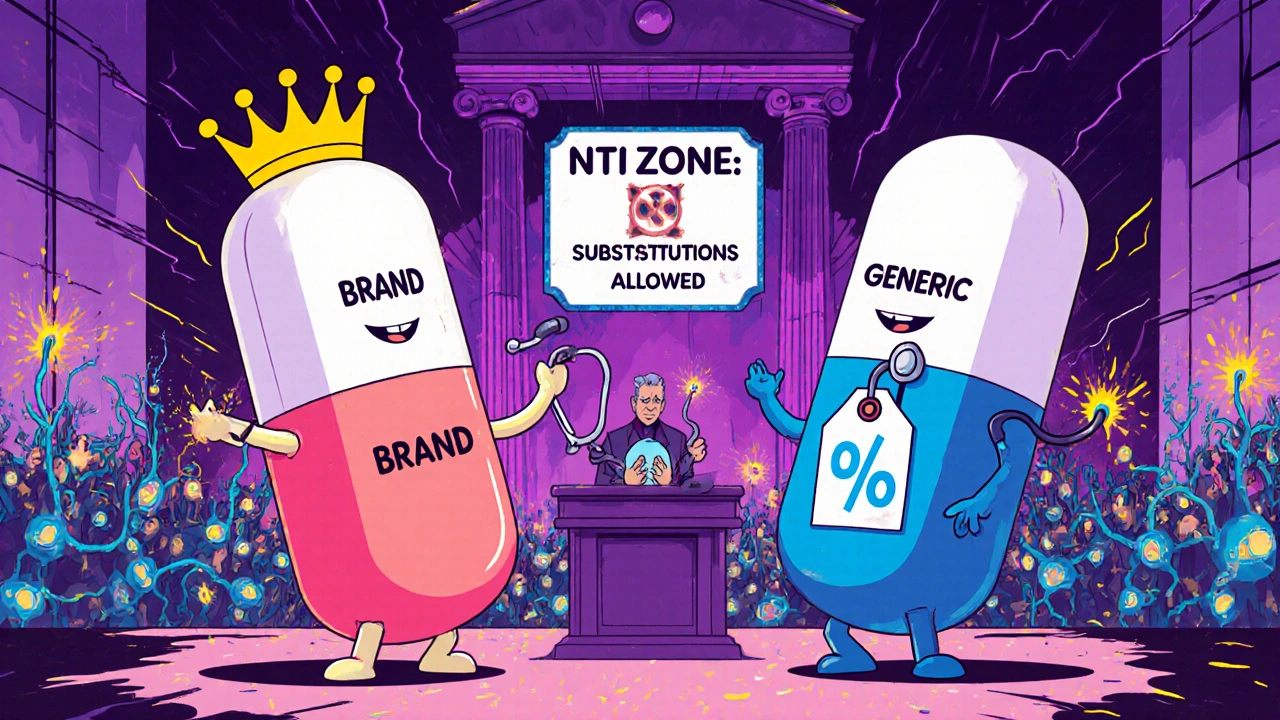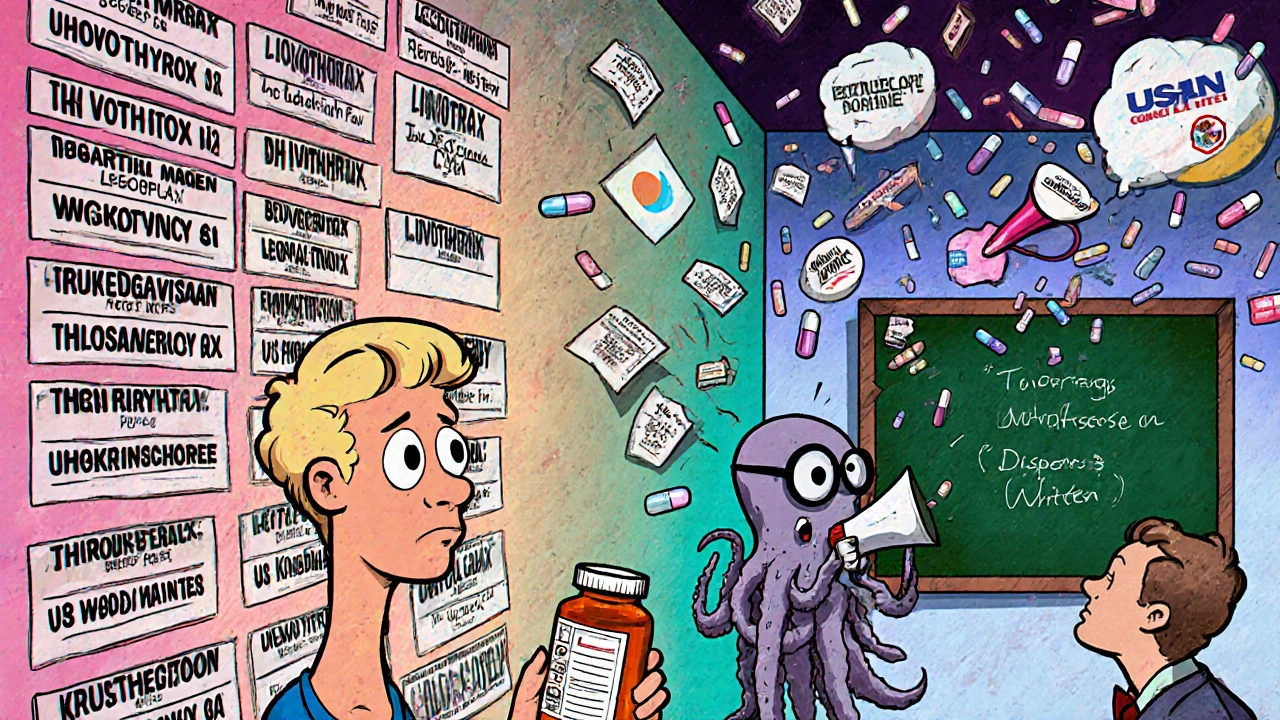 Nov, 19 2025
Nov, 19 2025
When your doctor writes a prescription, you might assume the pharmacy will give you the brand-name drug you recognize. But in most cases, you’ll get a generic version instead. That’s not just because it’s cheaper-it’s because medical societies, regulatory agencies, and pharmacies have built a system around generic substitution. But here’s the catch: not all doctors agree on when it’s safe.
Why Generic Drugs Are Everywhere
Generic drugs make up 90% of all prescriptions filled in the U.S., yet they cost only 23% of what brand-name drugs do. That’s not a coincidence. The FDA requires generics to have the same active ingredient, strength, dosage form, and route of administration as the original. They must also prove they’re bioequivalent-meaning they deliver the same amount of medicine into your bloodstream within an acceptable range (80% to 125% of the brand drug’s levels). This isn’t guesswork. It’s science, backed by strict testing called the ANDA process.So why don’t all doctors automatically approve substitutions? Because some drugs aren’t like others.
The Problem with Narrow Therapeutic Index Drugs
Some medications have a narrow therapeutic index (NTI). That means the difference between a dose that works and one that’s dangerous is tiny. Think anticonvulsants like phenytoin or levetiracetam. A small drop in blood levels might mean a seizure. A small spike could mean dizziness, confusion, or worse.The American Academy of Neurology (AAN) has been clear: they oppose automatic substitution of generic antiepileptic drugs. Why? Because even if a generic meets FDA bioequivalence standards, real-world patient outcomes can vary. One survey of neurologists found that 68% believe generic substitutions have led to treatment complications in their patients-breakthrough seizures, increased side effects, or loss of seizure control. These aren’t rare cases. Over 3.4 million Americans live with epilepsy. For them, switching generics isn’t just a cost-saving move-it’s a risk.
It’s not just neurology. Some endocrinologists and cardiologists also hesitate with drugs like warfarin, levothyroxine, and digoxin. These are NTI drugs too. A 2023 ASPE report noted that only a few states require a prescriber’s consent before substituting them. Most don’t. That means a pharmacist in one state might swap your brand drug for a generic without telling you-or your doctor.
Where Doctors Agree: Generic Substitution Is Fine
For most drugs, the medical community is on board. The American College of Physicians supports generic substitution across the board-for antibiotics, blood pressure meds, statins, antidepressants, and more. Their position is simple: if the FDA says it’s therapeutically equivalent, then it’s safe to use.The FDA’s Orange Book lists drugs with an “A” rating, meaning they’re approved as bioequivalent and interchangeable. Most generics fall into this category. In fact, when a generic is available, substitution rates hit nearly 90%. That’s because doctors, pharmacists, and patients all benefit. Lower costs mean fewer people skip doses or stop treatment entirely.
Even in oncology, where drugs are expensive and complex, the National Comprehensive Cancer Network (NCCN) accepts off-label use of generic drugs when they’re therapeutically equivalent. For example, if a generic version of a chemotherapy drug is approved for breast cancer but used for lung cancer (off-label), the NCCN still considers it safe and effective if the active ingredient matches. This flexibility helps patients get life-saving treatments without waiting for brand-name drugs to be covered by insurance.

What’s in a Name? The Hidden Risk in Generic Labels
You might not realize it, but the name on your pill bottle matters. The American Medical Association’s United States Adopted Names (USAN) Council decides how generic drugs are named. Their job? Make sure names don’t confuse doctors or pharmacists.They use “stems”-like “-pril” for ACE inhibitors or “-sartan” for ARBs-to show drug class at a glance. A good name tells you what it does, how it works, and who should avoid it. But bad naming? That’s where errors happen. A name too similar to another drug? A pharmacist might grab the wrong bottle. A doctor might misread it. The USAN Council avoids prefixes that sound or look like other drugs. They even have a pronunciation guide and drug finder tool to help reduce mistakes.
Still, not all pharmacies use these naming conventions consistently. And when a patient gets a different generic version every refill-because insurance switches suppliers-it can cause confusion. One patient might get a generic made in India, another in the U.S. Same active ingredient, different fillers, different absorption rates. For most people, it doesn’t matter. For a few, it does.
State Laws vs. Medical Guidelines: A Messy Reality
Here’s where things get complicated. State laws often force pharmacies to substitute generics unless the doctor says “do not substitute.” But medical societies like the AAN don’t have legal power. They issue guidelines. Hospitals and clinics may follow them. Private practices? Not always.Some states require prescriber consent before substituting NTI drugs. Others don’t. That means two patients with the same condition could get different treatment based on where they live. A neurologist in California might have to write “dispense as written” on every antiepileptic prescription. One in Texas might never need to.
Pharmacists are caught in the middle. They want to save money. They also want to avoid harm. But without clear guidance from the prescribing doctor, they’re left guessing.

What Patients Should Know
If you’re on a drug for epilepsy, thyroid disease, heart failure, or blood thinning-ask your doctor if switching generics is safe for you. Don’t assume it’s fine just because it’s cheaper.Keep track of which generic version you’re taking. If you notice new side effects, changes in how you feel, or worsening symptoms after a refill, tell your doctor. Write down the name on the bottle-sometimes it’s different from the last time.
And if your doctor says “do not substitute,” make sure they write it clearly on the prescription. Some electronic systems still allow substitutions even when the doctor says no. Be your own advocate.
For most other medications-antibiotics, cholesterol pills, diabetes drugs-generics are safe, effective, and often the best choice. The science supports it. The cost savings are real. Millions of people take them without issue.
The Bigger Picture: Cost vs. Safety
The push for generics comes from real economic pressure. Drug prices in the U.S. are among the highest in the world. Generic drugs save the healthcare system billions every year. But safety can’t be traded for savings.Medical societies aren’t against generics. They’re against blind substitution. Their guidelines exist to protect patients in high-risk situations-not to block progress. The goal is balance: use generics where they work, and protect those who need precision.
As the FDA continues to refine its therapeutic equivalence ratings and drug naming standards improve, we’ll likely see more alignment between medical guidelines and pharmacy practice. But until then, the decision isn’t just about price. It’s about trust. Trust in the science. Trust in the system. And most of all, trust that your doctor has your safety in mind.
Are generic drugs really as good as brand-name drugs?
Yes-for most drugs, generics are just as effective and safe. The FDA requires them to have the same active ingredient, strength, dosage form, and bioequivalence as the brand version. But for drugs with a narrow therapeutic index-like antiseizure meds, thyroid hormone, or blood thinners-small differences in absorption can matter. In those cases, some doctors prefer to stick with one version.
Can pharmacists switch my generic drug without telling me?
In most states, yes. Unless your doctor writes "dispense as written" or "no substitution," pharmacies are allowed to give you any FDA-approved generic version. This can change from refill to refill, even if the name on the bottle looks the same. If you’re on a critical medication, ask your pharmacist to stick with the same manufacturer.
Why do some doctors oppose generic substitution for epilepsy drugs?
Because even tiny changes in blood levels can trigger breakthrough seizures. While generics meet FDA bioequivalence standards, real-world patient data shows some individuals experience loss of seizure control after switching. The American Academy of Neurology advises against automatic substitution for antiepileptic drugs based on this clinical evidence.
How do I know if my drug has a narrow therapeutic index?
Common examples include warfarin, levothyroxine, phenytoin, carbamazepine, digoxin, and lithium. Your doctor or pharmacist can tell you if your medication falls into this category. If you’re unsure, ask: "Is this a drug where small changes in dose or formulation could affect how it works?" If yes, be cautious about switching generics.
Does insurance influence which generic I get?
Absolutely. Insurance plans often have preferred generic manufacturers to keep costs low. They may switch you to a cheaper version without telling you. If you notice side effects after a refill, check the name of the manufacturer on the bottle. It might be different from last time-even if the drug name looks the same.
